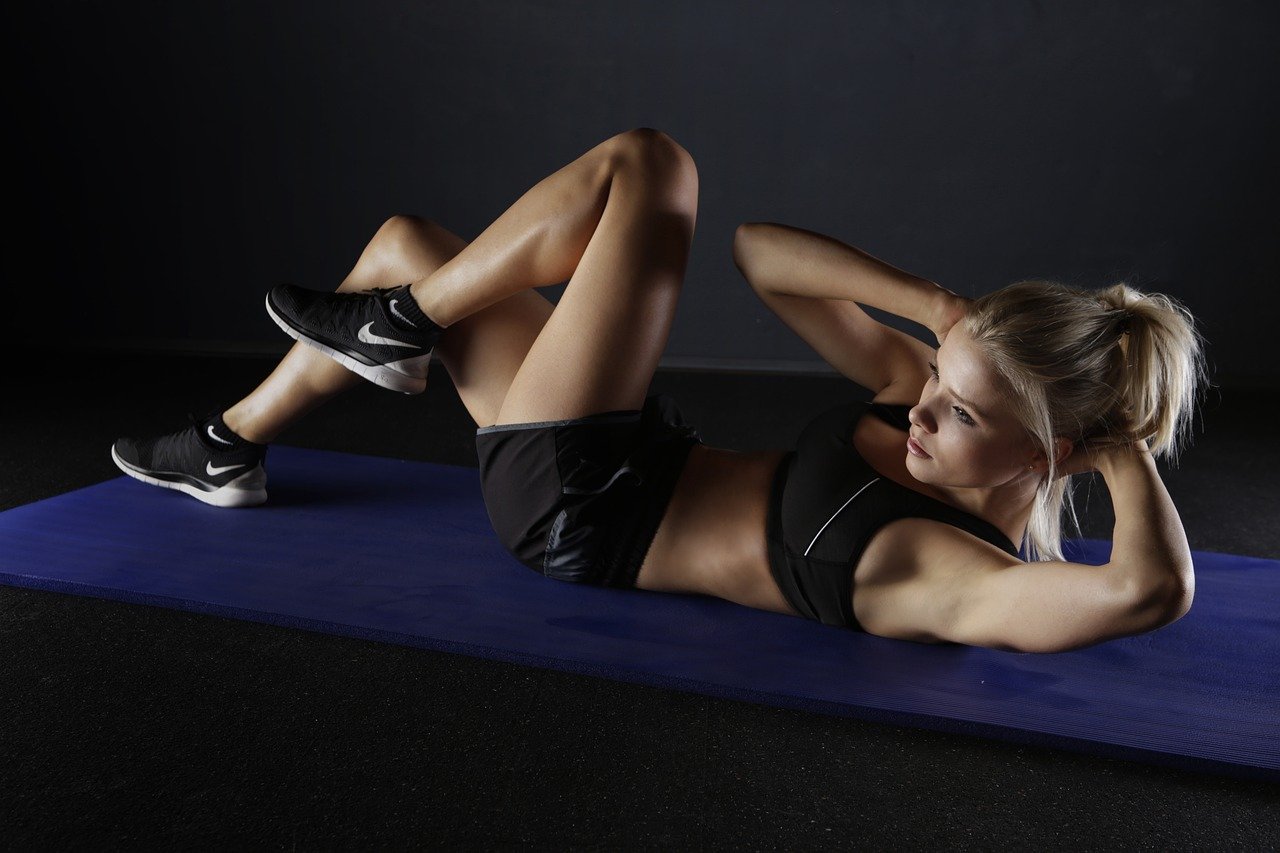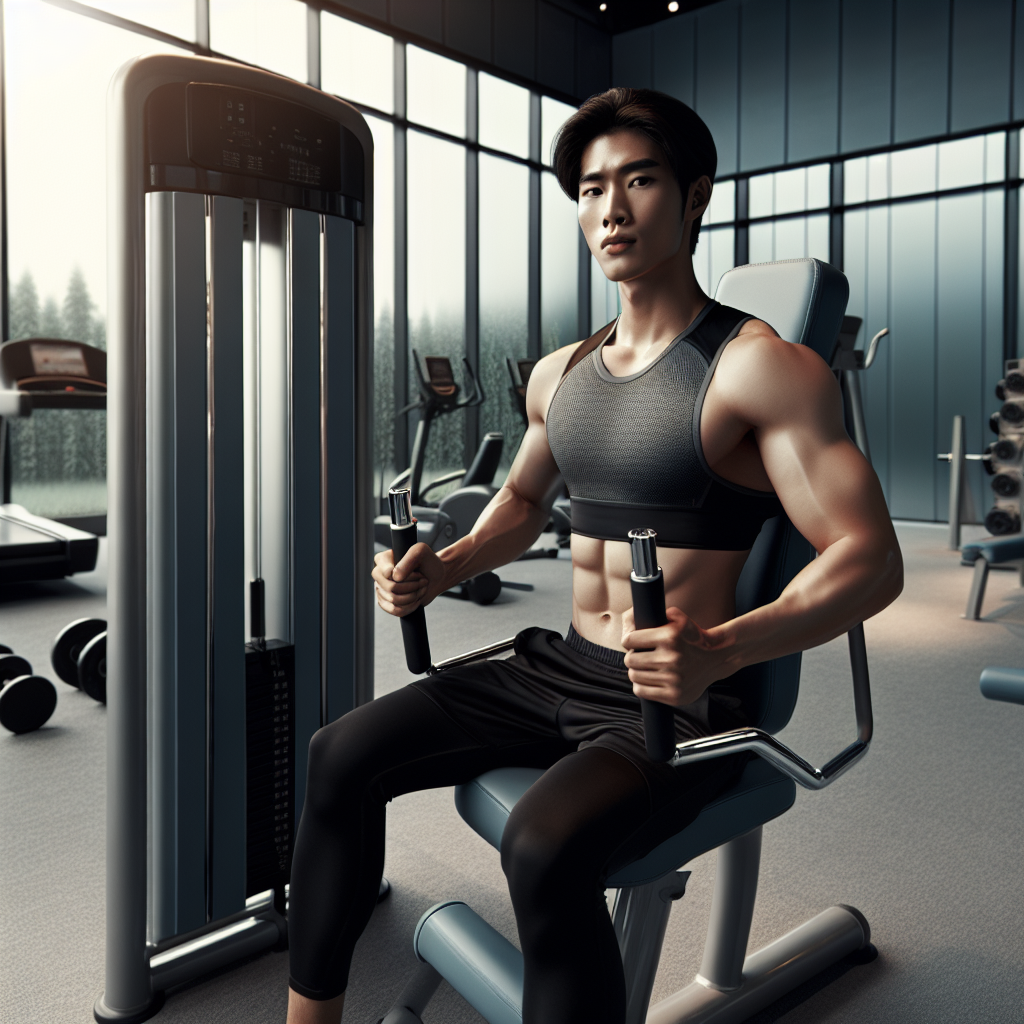The article titled “Maximizing Your Workout with the Lateral Machine” aims to provide readers with valuable insights into how to optimize their workout sessions using the lateral machine. Through an exploration of modern gym machines, their costs, comparisons, and a focus on the benefits of the lateral machine, this article will equip individuals with the necessary knowledge to make informed decisions about their workout routines. By understanding the distinct advantages offered by the lateral machine, individuals will be able to enhance the efficiency and effectiveness of their workouts, ultimately achieving their fitness goals more efficiently.

Maximizing Your Workout with the Lateral Machine
The lateral machine is a versatile fitness equipment that can greatly enhance your workout routine. This article provides a comprehensive guide on how to maximize your workout with the lateral machine. It will cover various aspects such as the machine’s overview, its benefits, proper form and technique, strength training exercises, cardiovascular exercises, incorporating resistance and intensity, targeting specific muscle groups, creating a complete workout routine, and tips for maximizing results.
Introduction to the Lateral Machine
Overview of the Lateral Machine
The lateral machine, also known as the lateral trainer or the lateral elliptical, is a modern gym machine designed to provide a low-impact but effective workout. It mimics the motion of side stepping or skating, engaging the muscles in the legs, glutes, and core. The machine consists of two footplates that move laterally, allowing users to step or glide from side to side.
Benefits of Using the Lateral Machine
Using the lateral machine offers several benefits for both beginners and advanced fitness enthusiasts. Firstly, it provides a low-impact workout option that is gentle on the joints while still promoting cardiovascular health. The lateral machine also targets multiple muscle groups simultaneously, making it a time-efficient workout method. Furthermore, it enhances stability and balance, as the side-to-side motion challenges the body’s coordination. Lastly, the lateral machine can help improve lateral movement skills, which can be beneficial for athletes participating in sports such as basketball or tennis.

Proper Form and Technique
Adjusting the Lateral Machine for Optimal Form
Achieving proper form and technique while using the lateral machine is crucial to maximize the effectiveness of your workout. Firstly, adjust the footplates to a comfortable width apart, ensuring that your knees are in line with your ankles and toes. This alignment will help maintain proper leg and hip positioning throughout the exercise. Additionally, set the resistance level to an appropriate intensity based on your fitness level and goals.
Maintaining Proper Posture
Maintaining proper posture throughout the workout is essential to prevent strain or injury. Keep your back straight, shoulders relaxed, and abdominal muscles engaged. Avoid slouching or leaning forward, as this can lead to poor form and decrease the effectiveness of the exercise. Maintaining proper posture will also contribute to better balance and stability.
Engaging the Target Muscles
To maximize the benefits of the lateral machine, it is important to focus on engaging the target muscles. Throughout the lateral movement, emphasize pushing through the heels and using the glutes and leg muscles to generate power. Engage the core muscles to stabilize the body and maintain proper alignment. By consciously activating the target muscles, you can ensure that they are effectively targeted and strengthened.
Strength Training Exercises
Lateral Machine Squats
Lateral machine squats are an excellent strength training exercise to include in your workout routine. Begin by standing on the footplates with your feet shoulder-width apart. Lower your body into a squat position, keeping your knees in line with your toes. Push through your heels to return to the starting position. This exercise targets the quadriceps, hamstrings, glutes, and calves.
Lateral Machine Lunges
Lateral machine lunges are another effective exercise to target the lower body muscles. Start by standing on one footplate with the other foot positioned slightly behind you on the other footplate. Step to the side with the foot on the stationary footplate, bending the knee and lowering your body into a lunge position. Push through the heel to return to the starting position and repeat on the other side. This exercise primarily targets the quadriceps, hamstrings, glutes, and inner thighs.
Lateral Machine Step-Ups
Lateral machine step-ups are a great exercise to strengthen the lower body and improve balance. Begin by standing on one footplate and step up onto the other footplate, driving through the heel. Step down with the opposite foot and repeat the movement, alternating between the two footplates. This exercise primarily targets the quadriceps, hamstrings, glutes, and calves.

Cardiovascular Exercises
Lateral Machine Cardio Circuit
Incorporating a lateral machine cardio circuit into your workout routine can elevate your heart rate and improve cardiovascular endurance. Start with a warm-up by using the lateral machine at a low intensity for 5-10 minutes. After the warm-up, increase the resistance and speed to a moderate level and perform intervals of high-intensity lateral movements followed by short periods of active recovery. Repeat this circuit for 20-30 minutes to get an effective cardiovascular workout.
Interval Training on the Lateral Machine
Interval training on the lateral machine is an efficient way to boost your cardiovascular fitness. Begin with a warm-up, then alternate between periods of high-intensity lateral movements and periods of active recovery at a lower intensity. For example, perform 30 seconds of fast-paced lateral steps followed by 60 seconds of slower, controlled lateral steps. Repeat this pattern for a total of 15-20 minutes, gradually increasing the intensity and duration as your fitness improves.
Incorporating Resistance and Intensity
Adjusting Resistance Levels on the Lateral Machine
To optimize your workout and continue making progress, it is important to adjust the resistance levels on the lateral machine. Experiment with different resistance settings to find the intensity that challenges you without compromising proper form and technique. Start with a lower resistance level if you are a beginner and gradually increase as your strength and endurance improve.
Progressive Overload for Continuous Improvement
Incorporating progressive overload into your lateral machine workouts is essential for continuous improvement. Progressive overload involves gradually increasing the demands placed on your muscles over time. You can achieve this by increasing the resistance level, duration, or intensity of your lateral machine exercises. This progressive challenge will stimulate muscle growth and enhance overall fitness.

Targeting Specific Muscle Groups
Lateral Machine for Leg and Glute Development
The lateral machine is highly effective in targeting the leg and glute muscles. By regularly incorporating exercises such as lateral machine squats, lunges, and step-ups, you can strengthen and tone these muscle groups. The lateral movement pattern activates the inner and outer thighs, quadriceps, hamstrings, and glutes, allowing for well-rounded lower body development.
Including Upper Body Exercises on the Lateral Machine
While the lateral machine primarily targets the lower body, it can also be utilized to incorporate upper body exercises. Utilize the handles or handrails of the lateral machine to perform exercises such as lateral arm raises, bicep curls, or shoulder presses. By engaging the upper body while using the lateral machine, you can achieve a more comprehensive full-body workout.
Creating a Complete Workout Routine
Incorporating the Lateral Machine into a Full-Body Workout
To create a complete workout routine, it is important to incorporate the lateral machine into a broader program. Combine lateral machine exercises with other strength training exercises for different muscle groups, such as upper body exercises with dumbbells or resistance bands. Additionally, include cardiovascular exercises like running or cycling to further enhance your fitness level and burn calories.
Sample Lateral Machine Workout Plan
Here is a sample lateral machine workout plan to give you an idea of how to structure your routine:
- Warm-up: 5-10 minutes on the lateral machine at a low intensity.
- Strength Training: Perform 3 sets of lateral machine squats (10-12 reps), lateral machine lunges (8-10 reps per side), and lateral machine step-ups (8-10 reps per side).
- Cardiovascular Exercise: Incorporate a 20-minute lateral machine cardio circuit, alternating between high-intensity lateral movements and active recovery.
- Cool Down: Finish the workout with 5-10 minutes of stretching and light cardio to gradually lower your heart rate.
Tips for Maximizing Results
Consistency and Frequency
Consistency and frequency are key factors in maximizing the results of your lateral machine workouts. Aim to incorporate the lateral machine into your fitness routine 2-3 times per week. Consistently performing the exercises with proper form and technique will promote muscle development, cardiovascular fitness, and overall progress.
Listening to Your Body
Listening to your body and understanding its limits is crucial for injury prevention and optimizing your workouts. If you experience pain or discomfort during an exercise, modify the movement or decrease the intensity. Make sure to rest and recover adequately between lateral machine sessions to avoid overtraining and allow your muscles to repair and grow.
Proper Warm-up and Stretching
Prior to using the lateral machine, it is important to properly warm up your body and stretch the major muscle groups. Perform dynamic stretches that mimic the movements of the lateral machine, such as side lunges or leg swings. This will increase blood flow, improve flexibility, and prepare your body for the upcoming workout. After your lateral machine session, cool down with static stretches to help prevent muscle soreness and maintain flexibility.
Conclusion
The lateral machine is a valuable addition to any workout routine, offering numerous benefits for individuals of all fitness levels. By understanding the proper form and technique, incorporating strength training and cardiovascular exercises, adjusting resistance levels, targeting specific muscle groups, and creating a complete workout routine, you can maximize the results of your lateral machine workouts. Remember to prioritize consistency, listen to your body, and always warm up and stretch properly. With these guidelines, you can effectively enhance your fitness journey and achieve your desired goals.


